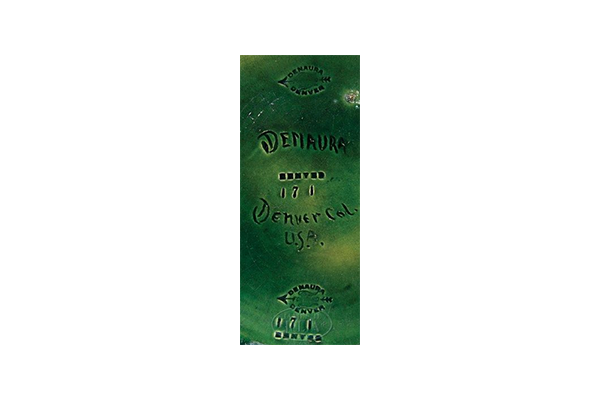For many art pottery collectors, Ohio is the place to go when they’re looking to learn more or expand their Roseville Pottery or Rookwood Pottery collections, but that’s not to say other regions of the country don’t have a lot to offer collectors. When you think of the south, odds are, it’s George Ohr, also known as the Mad Pottery of Biloxi and of course, the renowned Newcomb Pottery out of New Orleans, that come to mind.
But what do you associate with art pottery makers west of the Mississippi and specifically, Colorado? Van Briggle Pottery is one of those timeless names, forever associated with the best in American art pottery, but this wasn’t the only company in Colorado. In fact, Denver China and Pottery opened its doors within a few weeks of Van Briggle’s opening. What’s so interesting is the influence this company had within the art pottery community. So influential was Denver China and Pottery, the decision makers with Weller Pottery had considered relocating to the area after seeing the beautiful creations coming out of Denver China and Pottery.
William A. Long, who founded the highly respected (both then and now) Lonhuda Pottery, also founded Denver China and Pottery in 1901. If it was regional authenticity he was aiming for, he succeeded. He was committed to using materials, including clay, found only in Colorado.
There were two especially notable glazes used in the company’s wares. At that time, Grueby had seen great success with the matte green glaze it had perfected. Proof of that success and timeless quality is found in modern day. Odds are, you have something in your own collection that incorporates that rich green glaze. Once people realized that not only was Denver China and Pottery a force to be reckoned with, but that it was also giving them what they wanted, the company’s success soared. The matte glazing efforts were paying off.
There was one more glaze technique used by Denver China and Pottery. It was luminous, elegant and even suggested a fragility not seen in other pottery collections. The iridescent glaze was incorporated with great success and because of that, it remains popular within the pottery community.
If you’re not familiar with this line of American art pottery, the story is fascinating. Some of the works are on display at The Smithsonian National Museum. Also, if you live in or will be traveling through Colorado, be sure to explore “Colorado Kilns,” an exhibit running through October 1 at the Colorado History Museum. This is an annual conference, so if you’re unable to attend this year, it would make a great vacation for next year.
As always, we’d love to see photos of any Denver China and Pottery pieces you may own.



